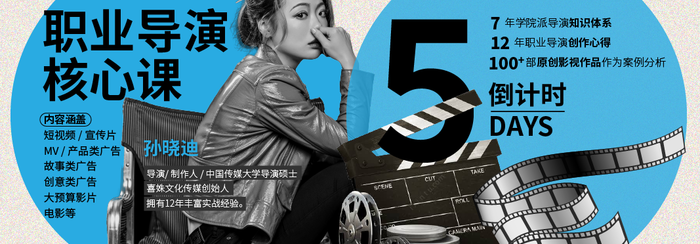Raw Capture, Linear Gamma, and Exposure 中英文对照
Raw Capture, Linear Gamma,
and Exposure
Perhaps the biggest difference between shooting film and shooting digital is the way the
two different media respond to light. Film responds to light the same way our eyes do, but
silicon does not. If you’re tempted to just file this information away as a mildly interesting
factoid, let me point out that you’d be overlooking the important implications the quirks
of silicon’s response have on the way we set exposure on digital captures. If you expose
digital the way you expose film, you run twin dangers of failing to exploit the camera’s
dynamic range, and creating exposures whose shadows are noisier than they need to be.
Film mimics the eye’s response to light, which is highly nonlinear. Most of our human
senses display a significant compressive nonlinearity—a built-in compression that lets
us function in a wide range of situations without driving our sensory mechanisms into
overload.
If you place a golf ball in the palm of your hand, then add another one, it doesn’t feel
twice as heavy. If you put two spoonfuls of sugar in your coffee instead of one, it doesn’t
taste twice as sweet. If you double the acoustic power going to your stereo speakers, the
resulting sound isn’t twice as loud. And if you double the number of photons reaching
your eyes, you don’t see the scene as twice as bright—brighter, yes, but not twice as bright.
This built-in compression allows your senses to function over an immense range of
stimuli. You can go from subdued room lighting to full daylight without your eyeballs
catching fire, even though you may have suddenly increased the stimulus reaching those
eyeballs by a factor of 10,000 or so. But the sensors in digital cameras lack the compressive
nonlinearity typical of human perception. They just count photons in a linear fashion.
【注:1.Raw在摄影里是相机拍摄的未处理过的原始数据。原文中Raw Capture是以相机原始数据格式拍摄的意思,本文按照习惯采用“相机原始数据采集”;2.Gamma,伽玛,在IT术语中是亮度调节的意思,原文中Linear Gamma是数码影像中亮度值按照线性分部的意思,本文按照习惯采用“线性Gamma”。】
感光方式的不同或许是拍摄胶片(Film)和拍摄数码(Digital)照片之间最大的区别。胶片与我们眼睛的感光方式完全相同,而硅材料却并非如此。如果您只是打算把这段内容当作一段有趣的争议信息归档,然后丢在一边,那么我要指出的是,在设置您数码相机曝光值(Exposure)的同时,您并没有意识到硅材料的这种感光特性对于数码摄影所蕴含的重要意义。假设您使用与胶片曝光相同的手法来拍摄数码照片,这将导致您运行在两个类似的潜在危险之中:降低对相机动态感光范围(Dynamic Range)的利用率和在阴影部分介入比原本更多的噪点(Noise)。
胶片模拟眼睛非线性(Nonlinear)的感光方式。人体几乎所有的感觉器官都会表现出一种有效地、高压缩比的非线性方式——这种内嵌的压缩机制可以让我们的感官系统在非常广泛的环境范围内可以正常运转,而不至于超出负荷。
如果您的手掌上有一个高尔夫球,然后再放上另一个,并不会觉得有两倍那么重。如果在咖啡里加两勺糖,您并不会觉得比一勺有两倍那么甜。如果把收音机的音量放大一倍,您并不会觉得最终的音量比刚才有两倍那么响。如果让两倍数量的光线到达您的眼睛,您并不会觉得有两倍那么亮,当然,会更亮,但不会觉得有两倍亮。
这种内嵌的压缩机制允许感觉器官可以接受非常宽广的刺激范围。当从一个昏暗的房间走到强烈阳光下的室外时,您的眼球不会燃烧起来,尽管有大约10,000光量因子的光线瞬时射入您的眼球。但是数码相机的感光芯片缺乏人类感觉器官上这种非线性压缩的特性。它们仅仅是以线性(Linear)风格来计算射入的光量。



这意味着如果数码相机采用12位(Bit)编码采集相机原始数据,那么亮度信息会被分割成4,096级色阶(Level),其中2,048级表现为4,096级色阶存储光量的一半。这就是线性Gamma的含义——色阶级数与对应采集到的光量完全符合。
线性采集对于曝光有着深远的意义。如果数码相机可以捕获到6档反差的动态范围,4,096级色阶的一半将贡献给最亮的一档,其余的一半(1,024级)信息贡献给下一档,再其余的一半(512级)信息再贡献给下一档,依此类推。仅有64级色阶用于表现最暗的一档(非常暗的阴影),如上图所示。
Linear capture
You may be tempted to underexpose images to avoid blowing out the highlights, but if you do,
you’re wasting a lot of the bits the camera can capture, and you’re running a significant risk of
introducing noise in the midtones and shadows. If you underexpose in an attempt to hold high-
light detail, and then find that you have to open up the shadows in the raw conversion, you have
to spread those 64 levels in the darkest stop over a wider tonal range, which exaggerates noise
and invites posterization.
Correct exposure is at least as important with digital capture as it is with film, but in the digital
realm, correct exposure means keeping the highlights as close as possible to blowing out, without
actually doing so. Some photographers refer to this concept as “Expose to the Right” because you
want to make sure that your highlights fall as close to the right side of the histogram as possible.
Note that the on-camera histogram shows the histogram of the in-camera conversion to JPEG: a
raw histogram would be a rather strange-looking beast, with all the data clumped at the shadow
end, so cameras show the histogram of the image after processing using the camera’s default set-
tings. Most cameras apply a fairly strong S-curve to the raw data so that the JPEGs have a more
film-like response, with the result that the on-camera histogram often tells you that your high-
lights are blown when, in fact, they aren’t.
There’s one more important factor that plays into exposure setting when you shoot digital cap-
tures. The response of a camera set to ISO 100 may really be more like ISO 125 or even ISO 150
(or, for that matter, ISO 75). It’s well worth spending some time determining your camera’s real
sensitivity at different speeds, and learning just how far you can trust the on-board histogram to
show highlight clipping. Once you’ve done so, you can dial in an appropriate exposure compen-
sation to make sure that you’re making the best use of the available bits.
I’d be remiss if I didn’t mention one of the great strengths of Adobe® Camera Raw in this area,
the extended highlight recovery feature, which kicks in when you set the Exposure slider to neg-
ative values. Most raw converters give up on highlights once a single channel is driven to clip-
ping, but Camera Raw does its best to reconstruct highlight detail from a single channel.
Depending on the camera model and the color temperature settings, you may be able to recover
as much as one stop of highlight detail, though one-third stop is more typical. If you use Camera
Raw, it’s worth spending some time conducting exposure tests to see just how far you can com-
fortably push the exposure.
Linear capture - 线性采集
或许您曾经采用曝光不足(Underexpose)的方法来避免图像的高光部分曝光过度(Blowing out),但如果这么做,您已经浪费了大量数码相机可以采集到的数据位(Bit),同时还会陷入在中间调(Midtone)和阴影(Shadow)部分引入更多噪点(Noise)的严重隐患。如果您企图通过曝光不足来保证高光部分的细节,在接下来的相机原始数据转换过程(Raw Conversion)中您会发现不得不扩展阴影部分,您不得不把最暗那一档的64级色阶扩展到一个相当大的色调范围(Tonal Range),这将引入夸张数量的噪点,同时也会产生色调分离(Posterization)现象。
选择正确的曝光是摄影最基本的要求,无论拍摄胶片亦或数码照片都同等重要。但是在数码摄影领域,选择正确的曝光方法意味着尽可能的使高光区域接近曝光过度,但并非绝对的不溢出。一些摄影师将这种观点称之为“向右曝光”,这是由于您总希望确保高光区域(Highlight)尽可能的靠近直方图的右边框。
值得注意的是数码相机上显示的直方图是机身转换为JPEG格式之后的直方图:一幅相机原始数据(Raw)的直方图看上去或许像一头相貌古怪的野兽,所有的数据丛都在阴影的一端,于是数码相机采用机身默认设置转换后的直方图来显示。大多数的数码相机会对相机原始数据(Raw)应用一个相当强烈的S曲线(S-curve),所以转换后的JPEG图像看上去更像是胶片感光后的效果,在这种情况下,读取机身上的直方图经常会告诉您高光部分已经曝光过度,实际上,它们并没有那样。
当您拍摄数码照片的时候,仍然要注意另外一个重要的因素。当数码相机的感光度(ISO)设置为ISO100时,实际上得到的真实效果更像是ISO125甚至ISO150(或者有时候是ISO75)。建议您还是非常值得花一点时间来检测一下相机在不同快门速度下的真实灵敏度,以及了解机身直方图指示出的高光裁切(Highlight Clipping)对您来说的可信程度。一旦您掌握了这些因素之后,便可以使用适当的曝光补偿(Exposure Compensation)来确保您更大限度的利用所有的可用数据位(Bit)。
我竟然粗心到现在才提及强有力的工具之一Adobe Camera Raw,其扩展高光恢复特性,可以在您将曝光滑块设置为负值时有效的介入。当某个通道产生高光裁切时,大多数的相机原始数据转换器(Raw Converter)会放弃处理,但是Camera Raw可以从一个单独通道里对高光细节进行最好的重建。依据不同的相机型号和色温设置,您或许可以恢复将近整整一档的高光细节,虽然大多数情况下恢复1/3档的效果比较理想。如果使用Camera Raw,那么您值得花些时间来做一些曝光测试,看一看您可以轻松掌控的曝光范围究竟有多远。
本文为作者 分享,影视工业网鼓励从业者分享原创内容,影视工业网不会对原创文章作任何编辑!如作者有特别标注,请按作者说明转载,如无说明,则转载此文章须经得作者同意,并请附上出处(影视工业网)及本页链接。原文链接 https://cinehello.com/stream/5346
